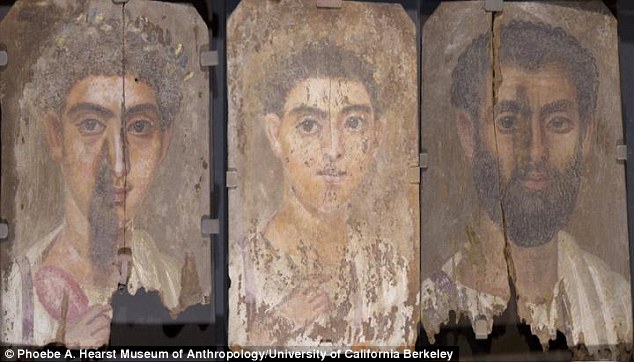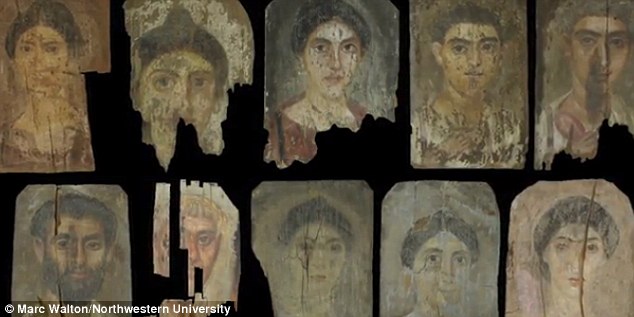The idea of painting and art started centuries ago. Everyone can relate to the beautiful colors and techniques that were developed over the years. One interesting ongoing research is how there came to be paintings of people found in an Egyptian tomb. Archaeologists found bright colors and the faces of people painted onto wood. These pieces of wood were then found covering Egyptian mummies. Researchers believe that these wooden paintings influenced the later painting styles and techniques for religious icons throughout Europe.
A fascinating thing about these discoveries is that the artists who created the artwork nearly 2,000 years ago relied on materials from distant cities in parts of Europe in order to create the lifelike portraits of the dead.
The portraits were discovered in an ancient Egyptian settlement known as Tebturnis, which is modern day Umm el-Baragat in Al Fayyumm. Surprisingly, this area had been overlooked for nearly 100 years. Aside from the papyri found in the area, the 15 Roman-era wooden paintings were first found by archaeologists in 1899.

Now, with new technology, archaeologists are able to look at the wooden images by studying the pigments, brush strokes, and the wood used to create the pieces. What the researchers discovered actually surprised them because the first pigments had been artificially manufactured. As for the bright colors, it was believed that the artists used them as the final top layer of paint.
However, these wooden portraits had been hidden beneath other colors. After further analysis, researchers realized why the artists paid so much for the pigments as their base coat – the red lead pigment used on the wooden portraits were tested and shown as having come from as far away as Spain. Other pigments used appeared to have been imported from Keos, Greece, and the wood that the portraits were painted on were imported from Central Europe.
Under all of the layers of red and yellow paint, the researchers found that the artists had sketched out the work with a certain pigment called Egyptian Blue, which was very valuable at the time. However, those bright colors were hidden under all the other colors.
The researchers on the team came from Northwestern University and The University of California, Berkeley. Phoebe A. Hearst from the Museum of Anthropology had suggested that in order to acquire such high-priced and rare paints, the artists must have relied on a vast trading network.
Another archaeologist on the team, Dr. Marc Walton, had said that this new type of research may shed light on where the techniques used in the Byzantine Empire came from. He added that the Roman-Egyptian portraits had been created in Egypt from the 1st and 3rd centuries AD. For example, the Egyptian artists’ techniques were actually used by Greek artists, who ended up creating the head-on portraits. Those techniques would go on to inspire the iconic images of Jesus Christ, the Virgin Mary, and angels in the Orthodox Christian and Catholic Churches.
He also added that the paintings were put on wooden panels and the artists had used wax which was originally attached to mummies. The portraits were considered to be “antecedents of Western portraiture.”

Walton expressed that the analysis shows that the artists’ styles had reflected the international perspective of the ancient Egyptians. He explained that a majority of the iron-earth pigments had come from Keos, Greece, and the red lead came from Spain. The artists also used the Egyptian blue in a different way in order to broaden their spectrum of hues.
The portraits found in the tomb are actually considered some of the best-preserved paintings from that time period. They are now also considered one of the most important collections in the world.
The way the researchers analyzed the portraits is by taking some tiny samples of the paint to study how the portraits were made and using some non-destructive imaging techniques. They were also able to work out the order of which parts of the paintings were built up and they also examined the brush strokes on the wood.